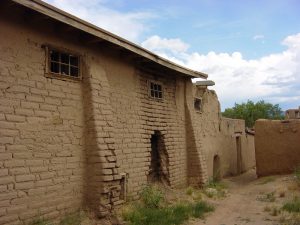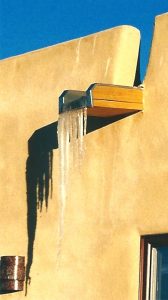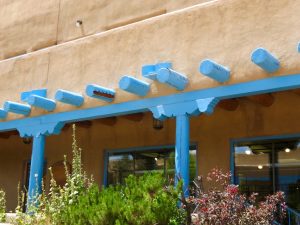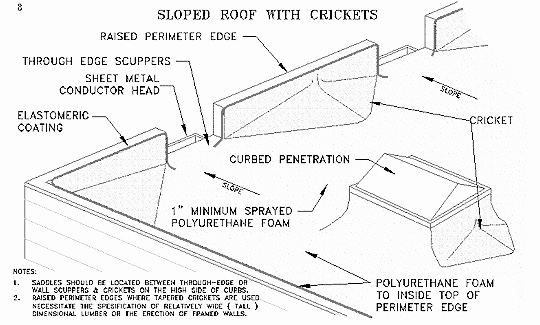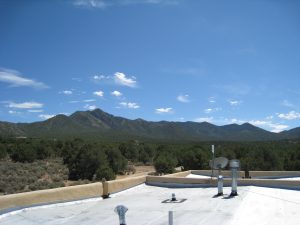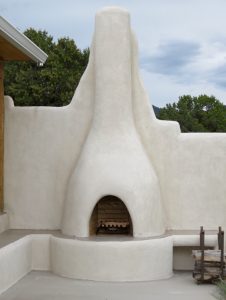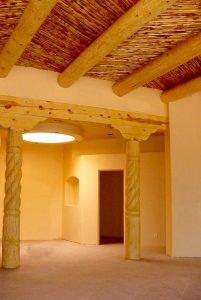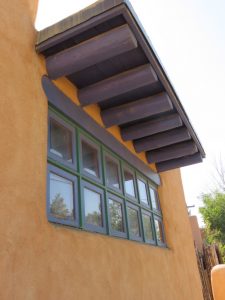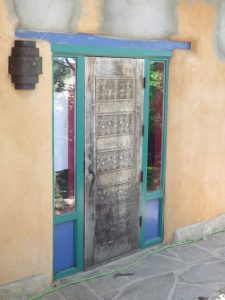Aspen Trees
An aspen tree is a high-elevation, medium-sized deciduous tree, commonly twenty to eighty feet in height and three to eighteen inches in diameter. The bark is greenish-white to almost white in color. 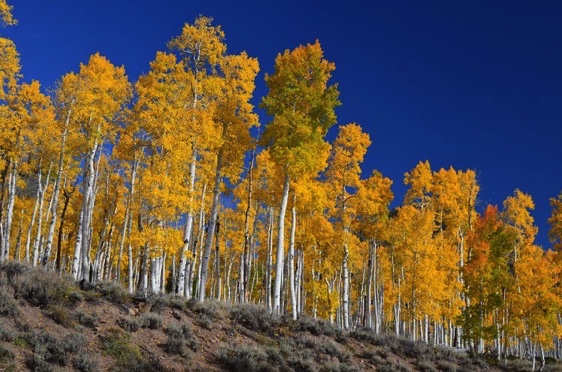
In the US, aspens are generally found at elevations of five thousand to twelve thousand feet. Whenever I see an aspen below five thousand feet, my first instinct is to look for a house, as more than likely man planted the tree as opposed to nature.
Aspen leaves are round and the stems flat. The unique flattened stem allows the leaves to tremble or quake even in the slightest breeze. Some liken the sound to the flutter of a thousand butterfly wings. However, the sound reminds me of rushing water. 
In fall, aspens put on a spectacular display with their brilliant gold leaves. At this time of year, one of my favorite things is to set out for a day trip to photograph some fall color. I head northwest from Taos (6969’) to Chama, New Mexico (7870’), on US Route 64. In Chama, I connect to State Road 17 and drive east to Antonito, Colorado (7890’), where I break for lunch, before driving south on US Route 285 back to Taos. Photo: Fall aspens with their vibrant yellow canopies and tube-like clusters of white stands, dotting the edge of a conifer forest in clusters or “clones.” Photo: New Mexico/Colorado border.
Cottonwood Trees
Cottonwoods are massive shade trees that grow throughout the US and are members of the poplar family. They have broad white trunks and bright green foliage in the summer that turns a brilliant yellow in the fall. In the spring, female trees produce tiny red blooms followed by masses of seeds with a cottony cover. Male cottonwoods do not produce seeds.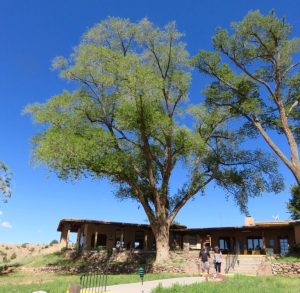
The trees need full sun and plenty of water, which is why they grow particularly well along lakes, rivers, and marsh areas. Planted in home landscapes, they create a number of problems. In spring, the cotton-covered seeds create a significant mess. Because they are fast growing, the wood is weak and prone to disease, and due to their size they are out of scale for even the largest home landscape. A young tree can add six feet of growth per year and grow well over one hundred feet tall with a canopy seventy-five feet wide, and a trunk diameter that averages six feet at maturity. Their size and rapid growth makes them an excellent shade tree, and they are often used as windbreaks.
As for lumber, the wood tends to warp and shrink, and it doesn’t have an attractive grain, so it is best suited for making pallets, crates, and boxes. Native Americans used every part of the tree. Trunks were made into dugout canoes. The bark provided forage for horses and a bitter, medicinal tea for man. The sweet sprouts and inner bark were food for both humans and animals. Photo: Cottonwood tree at Ghost Ranch, Abiquiu, New Mexico.
Juniper Trees
The one-seed juniper is a high desert evergreen that seldom grows more than fifteen feet tall. It dots the drier habitats of New Mexico at elevations between five and seven thousand feet, and is a slow-growing, drought-hardy native species that will stop active growth when moisture is limited but resumes growth when moisture conditions improve. While the juniper is slow growing above ground, it is rapid growing downward, setting down a tap root that can be as long as thirty feet. Mature trees can range from five to thirty feet and produce a tap root almost two hundred feet long. This long tap root makes them almost impossible to transplant with any success. Male junipers produce masses of tiny cones, while female trees produce berry-like seeds that are bluish-purple. 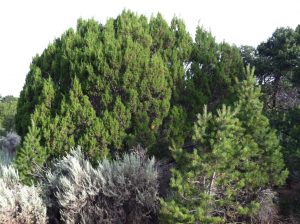
After a good night’s rain, make a point of facing the sunrise standing west of a grove of junipers. The rising sun will bathe the branches in light, and the droplets will glow like a million tiny lights. Photo: Juniper tree to the left, piñon to the right and foreground.
Piñon Trees
The piñon (pronounced “pin-yon”) is a slow-growing, two-needled pine that at maturity seldom exceeds thirty feet in height. After sixty years, a piñon might be only six to seven feet tall, and the trees can live long lives, some exceeding six hundred years. 
The piñon is the state tree of New Mexico, and it grows wild in the high desert mountain regions of New Mexico, Colorado, Arizona, and Utah in native stands along with native junipers. These vast areas of the Four Corners region are referred to as piñon-juniper woodlands.
Piñon wood burns hot, has a pleasing, smoky-aromatic pine fragrance, and is a natural insect repellent when burned. 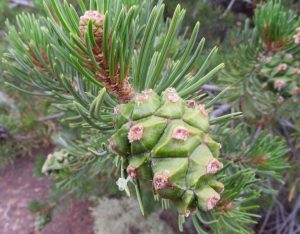
Despite the drought tolerance of piñons, repeated years of severe drought can stress the trees and lead to an attack by an insect called the piñon ips beetle, which caused widespread piñon mortality throughout New Mexico between 2002 and 2004. Today, the bark beetle continues to be a threat to the region, and since much of the weather pattern in New Mexico is tied to the El Niño/La Niña climate cycle—the latter is associated with dry, droughty weather
throughout the state—the beetle will continue to be a threat to the state’s piñon population until there is a shift to a strong El Niño.
Bosque
A bosque is a gallery forest that grows along the banks of a river, flood plain, or any watercourse. A good example of a bosque is the forest of trees that bank the Rio Grande River. Photo: Bosque in the fall, Albuquerque, New Mexico–Vanessa Ortiz.
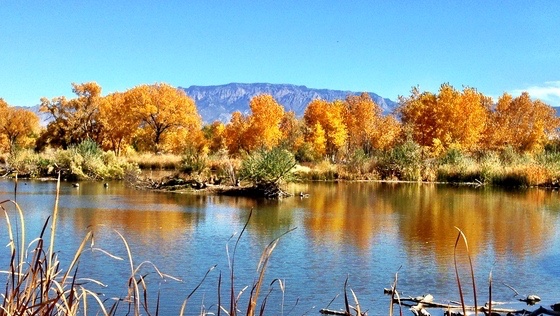


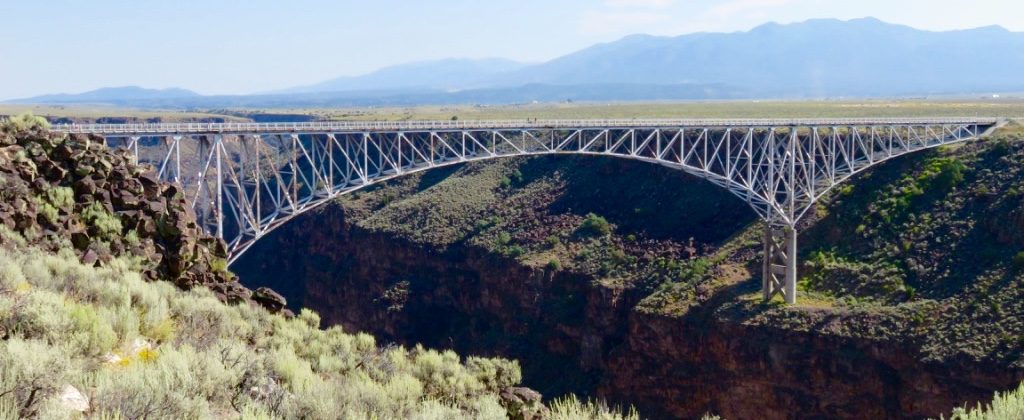
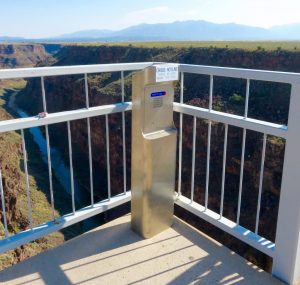 Unfortunately, the popularity of the bridge has also made it a suicide magnet. There have been more than 115 suicides in a twenty-year span, with the most recent occurring in the past two months. After years of inaction on suicide prevention, crisis phones were installed at the bridge in late 2014. The ten call boxes each bear a sign that reads, “There is hope. Make the call.” When a person presses the call button, he or she is connected to the New Mexico Crisis and Access Line in Albuquerque where counselors field the calls around the clock. Mental health advocates says it is a first step but not a prevention strategy unto itself. The New Mexico Department of Transportation is studying the feasibility of either raising the bridge railings or installing netting. The most famous example of crisis phones being installed (in 1993) was at the Golden Gate Bridge in San Francisco. In the fourteen years following their installation, 380 people leaped to their deaths from the landmark.
Unfortunately, the popularity of the bridge has also made it a suicide magnet. There have been more than 115 suicides in a twenty-year span, with the most recent occurring in the past two months. After years of inaction on suicide prevention, crisis phones were installed at the bridge in late 2014. The ten call boxes each bear a sign that reads, “There is hope. Make the call.” When a person presses the call button, he or she is connected to the New Mexico Crisis and Access Line in Albuquerque where counselors field the calls around the clock. Mental health advocates says it is a first step but not a prevention strategy unto itself. The New Mexico Department of Transportation is studying the feasibility of either raising the bridge railings or installing netting. The most famous example of crisis phones being installed (in 1993) was at the Golden Gate Bridge in San Francisco. In the fourteen years following their installation, 380 people leaped to their deaths from the landmark.
